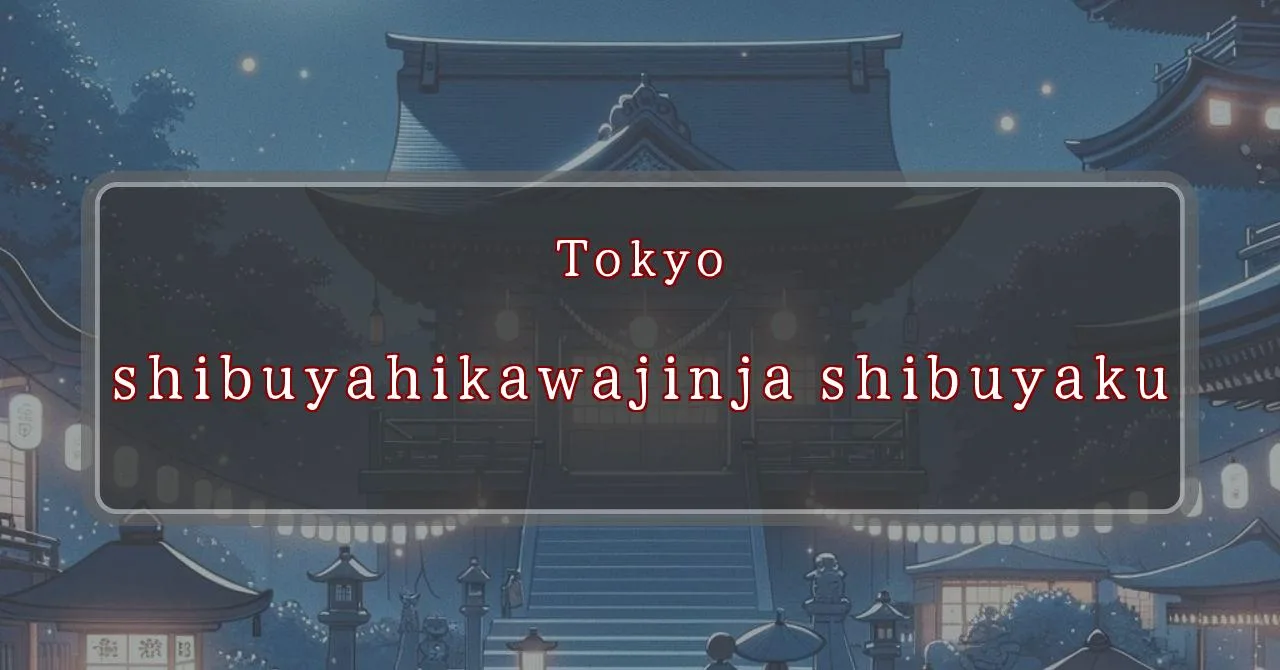Shibuya’s grand festival of floats and music
Basic Information
Shibuya Hikawa Shrine is a Shinto shrine located in the Shibuya district of Tokyo, Japan. It is dedicated to the deities Susanoo-no-Mikoto, Inari-no-Mikoto, Ōnamuchi-no-Mikoto, and Amaterasu-Ōmikami.
- Address: 2-5-6 Higashi, Shibuya-ku, Tokyo 150-0011
- Phone Number: 03-3407-7534
- Access: 1-minute walk from Kokugakuin-mae Station on the Tokyu Toyoko Line
- Festival Days: September 14th (Sat) and 15th (Sun), 2024
Main Events and Attractions of the Festival
The Shibuya Hikawa Shrine Festival is a two-day festival held annually in mid-September. The festival features a variety of events and attractions, including:
Mikoshi Procession
The highlight of the festival is the mikoshi procession, which takes place on both days of the festival. Four portable shrines, each representing a different neighborhood, are carried through the streets of Shibuya by teams of people. The procession is accompanied by music and dancing, and it is a lively and colorful spectacle.
Kagura Performance
Kagura is a traditional Japanese Shinto dance and music performance. During the festival, kagura performances are held at the shrine’s kagura殿 (kagura hall). The performances are typically performed by young women, and they tell stories from Japanese mythology.
Food Stalls
During the festival, food stalls are set up along the streets surrounding the shrine. These stalls sell a variety of Japanese festival foods, such as yakitori (grilled chicken skewers), takoyaki (octopus balls), and kakigori (shaved ice). There are also stalls selling souvenirs and crafts.
Bon Odori
On the evening of the second day of the festival, a bon odori (bon dance) is held at the shrine. Bon odori is a traditional Japanese folk dance that is performed during the Obon festival, which is a time to honor the spirits of the dead. The bon odori at Shibuya Hikawa Shrine is a lively and festive event, and it is a great opportunity to experience Japanese culture.
Blessings and Deities
Shibuya Hikawa Shrine is dedicated to four deities:
- Susanoo-no-Mikoto: The god of storms, seas, and agriculture
- Inari-no-Mikoto: The god of rice, sake, and fertility
- Ōnamuchi-no-Mikoto: The god of medicine and hot springs
- Amaterasu-Ōmikami: The goddess of the sun and the universe
The shrine is particularly popular among people seeking blessings for good luck,縁結び (enmusubi, or matchmaking), and safe childbirth.
Origin and History
The origins of Shibuya Hikawa Shrine are unclear, but it is believed to have been founded in the early Heian period (794-1185). The shrine was originally located in what is now the Ebisu district of Shibuya, but it was moved to its current location in 1611.
Shibuya Hikawa Shrine has a long and rich history. In the Edo period (1603-1868), the shrine was a popular destination for pilgrims and travelers. The shrine was also a center of sumo wrestling, and it hosted one of the three major sumo tournaments in Edo.
Tips and Notes for Visitors
- The Shibuya Hikawa Shrine Festival is held annually in mid-September. The festival features a variety of events and attractions, including a mikoshi procession, kagura performances, food stalls, and a bon odori.
- The shrine is open daily from 9:00 AM to 5:00 PM. Admission is free.
- The shrine is located a 1-minute walk from Kokugakuin-mae Station on the Tokyu Toyoko Line.
- There is a small parking lot available for visitors.
Parking Information
There is a small parking lot available for visitors to Shibuya Hikawa Shrine. The parking lot is located behind the shrine, and it can accommodate up to 10 cars. The parking fee is 500 yen per day.
Popular Stalls and Food Carts in Recent Years
| Type of Stall | Description |
|---|---|
| Takoyaki | A staple at Japanese festivals. Characterized by a crispy outside and a creamy inside. |
| Jaga Butter | A simple yet popular snack of hot potatoes lavishly topped with melted butter. |
| Baby Castella | Small castella cakes, sweet and fluffy treats enjoyed by children and adults alike. |
| Grilled Ayu with Salt | Fresh ayu fish grilled whole with salt, a savory taste of Japanese summer. |
| Shaapin | A unique gourmet item influenced by foreign cuisine, with a chewy skin wrapping the filling. |
| Okonomiyaki | A Japanese grilled dish where you often choose your own ingredients for a personalized flavor. |
| Cotton Candy | A fluffy, sweet snack that’s extremely popular with children. |
| Chocolate Banana | A banana coated in chocolate, a fun and visually appealing dessert. |
| Kushiyaki | Various types of ingredients skewered and grilled, an easy-to-enjoy snack. |
| Yakisoba | Fried noodles mixed with a special sauce, a fast food favorite in Japan. |



